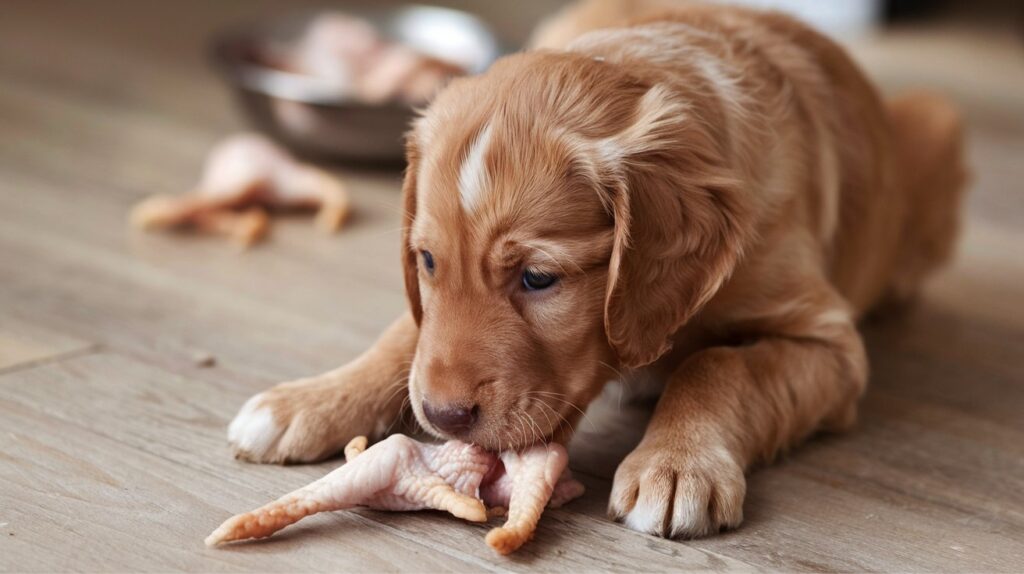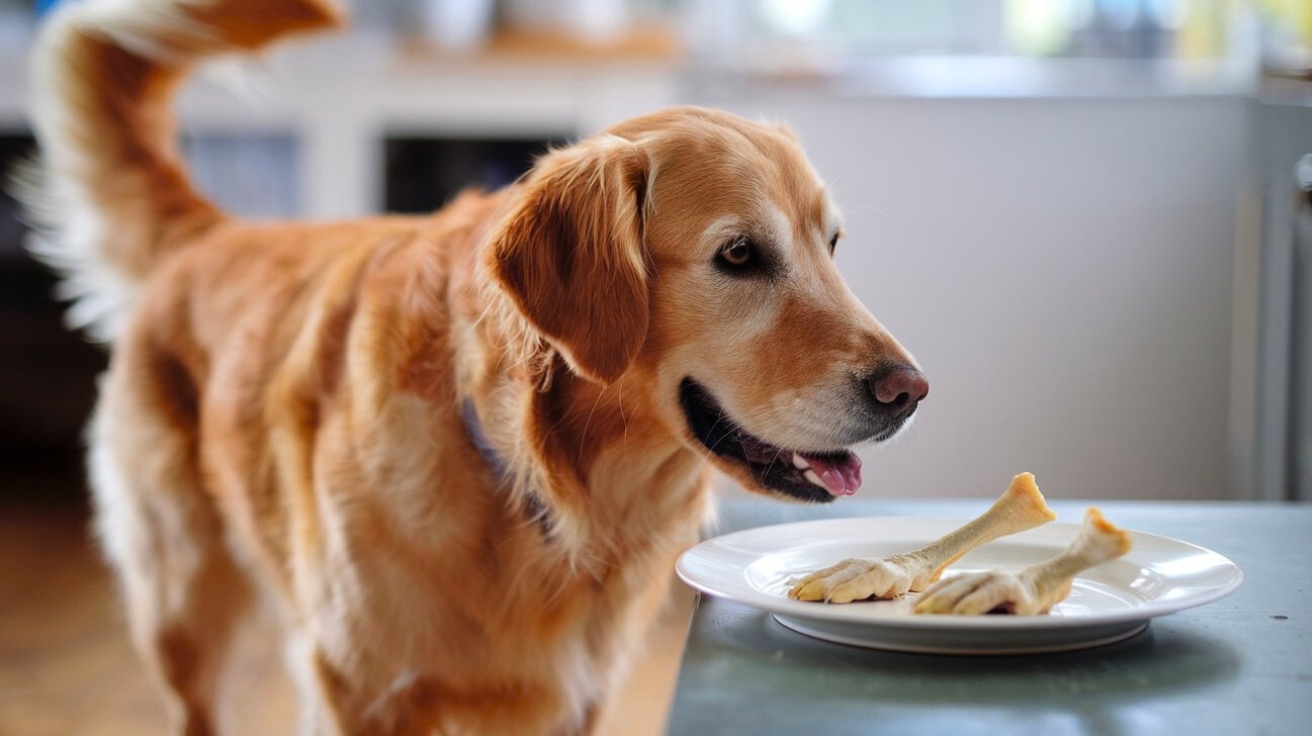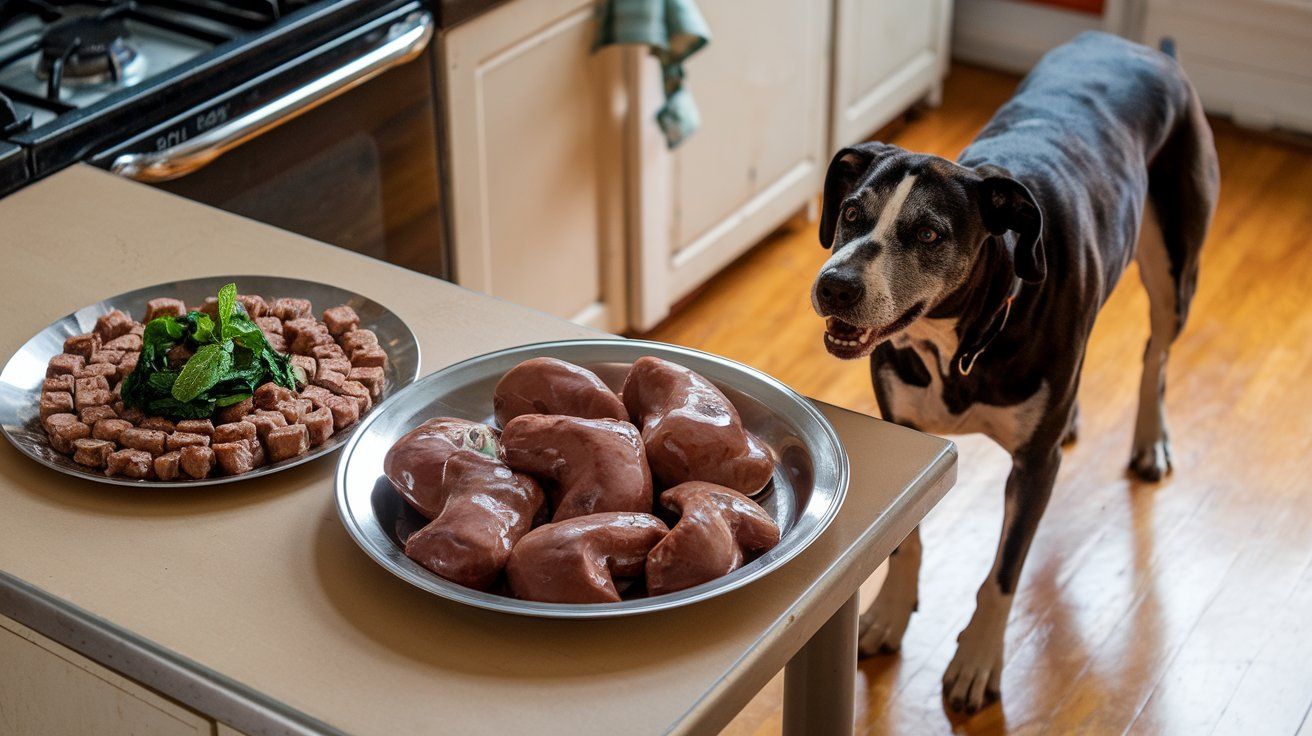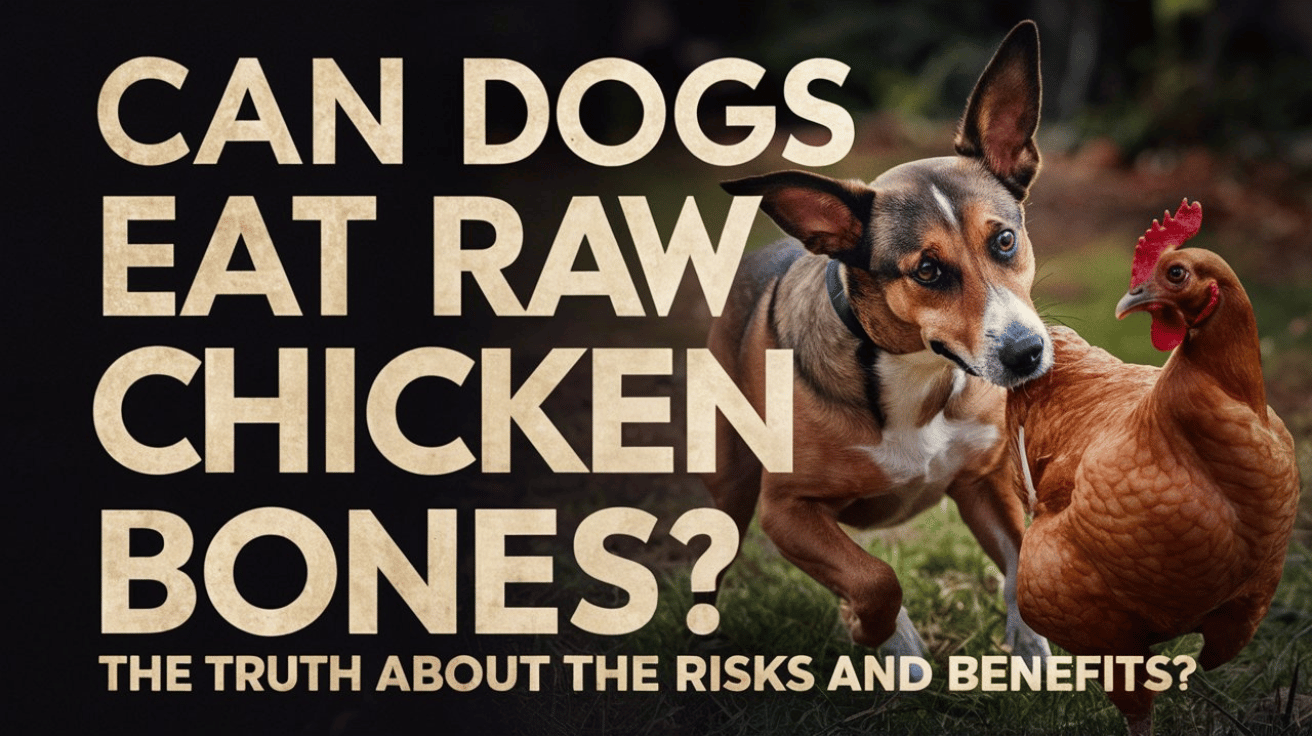Yes, dogs can eat raw chicken feet, and they are actually a healthy treat for them. Raw chicken feet are rich in glucosamine and chondroitin, which help support joint health and mobility. They also provide a natural way for dogs to clean their teeth and maintain good dental hygiene.
How Can Dogs Eat Raw Chicken Feet and Its Nutrition?
Raw chicken feet are a beneficial treat for dogs, particularly noted for their high glucosamine and chondroitin content, which supports joint health. Like chicken feet, raw chicken hearts, and kidneys are also rich in essential nutrients; hearts are packed with taurine for cardiac health, while kidneys provide valuable vitamins and minerals that support the urinary tract. The chicken feet aid dental hygiene through the mechanical action of chewing, helping to clean teeth and massage gums. Rich in protein and low in fat, these treats provide essential minerals like calcium and phosphorus, which are crucial for bone health.

Like raw chicken bones, which can offer chewing satisfaction and nutritional benefits when fed properly, these parts should be incorporated into your dog’s diet with caution. All these raw chicken parts should be sourced from reputable suppliers to ensure safety and nutritional integrity and fed in moderation to avoid overloading your dog’s diet with too much protein or causing dietary imbalances.
Nutritional Benefits of Chicken Feet for Dogs
Raw chicken feet are not just a quirky snack for your dog; they are packed with substantial nutritional benefits.
Joint Health:
Primarily known for their high concentrations of glucosamine and chondroitin, these treats can play a crucial role in maintaining your dog’s joint health.
Chicken feet glucosamine is especially notable. Each foot contains about 450mg of glucosamine, which is comparable to the amount found in many commercial joint health supplements. This makes chicken feet a natural alternative that can support your dog’s mobility and overall joint function.
Bones Health:
Moreover, chicken feet are also a good source of protein and contain trace amounts of calcium and phosphorous, which are vital for strong bones and teeth.

Dental Health:
Dental Health is another area where chicken feet can be beneficial for dogs. The act of gnawing on the tough texture helps in cleaning teeth and massaging gums, which can reduce the build-up of plaque and tartar.

This natural abrasion provides a dual benefit—it keeps your dog’s gums healthy and reduces bad breath, making them a practical component of dental care.
Skin and Coat Health:
A high content of collagen aids in maintaining skin elasticity and ensuring a healthy coat.
Digestive Health:
Collagen aids in gut health by decreasing inflammation and facilitating digestion.
Nutritional Content in Raw Chicken Feet
However, it’s essential to balance these treats within a comprehensive diet to avoid excess calorie intake. Here’s a quick look at the nutritional content typically found in raw chicken feet:
| Nutrient | Amount per 100g | Benefits | Source |
|---|---|---|---|
| Protein | 19g | Supports muscle growth and repair | More on muscle growth and repair from Vet Advises |
| Fat | 15g | Provides energy and supports cell function | Details on energy and cell function by Vet Advises |
| Calcium | 170mg | Promotes bone health | Read about bone health at Vet Advises |
| Phosphorus | 120mg | Works with calcium to maintain bone health | More on bone health from Vet Advises |
| Collagen | High | Supports joint health, skin, and coat | Explore joint health benefits at Vet Advises |
| Glucosamine | 450mg | Aids in the formation and repair of cartilage | Learn about cartilage repair from AnimalWised |
| Chondroitin | High | Prevents the breakdown of joint cartilage | More on joint cartilage from AnimalWised |
Potential Risks of Feeding Dogs Raw Chicken Feet
While the nutritional benefits of raw chicken feet are significant, it’s crucial to consider the risks of raw chicken feet to ensure the safety of your canine companion.
Bacterial Contamination
One of the primary concerns with raw chicken feet is the risk of bacterial contamination, such as Salmonella and Campylobacter. These bacteria can not only affect your dog’s health but can also pose a risk to human health, especially if proper handling and hygiene practices are not followed.
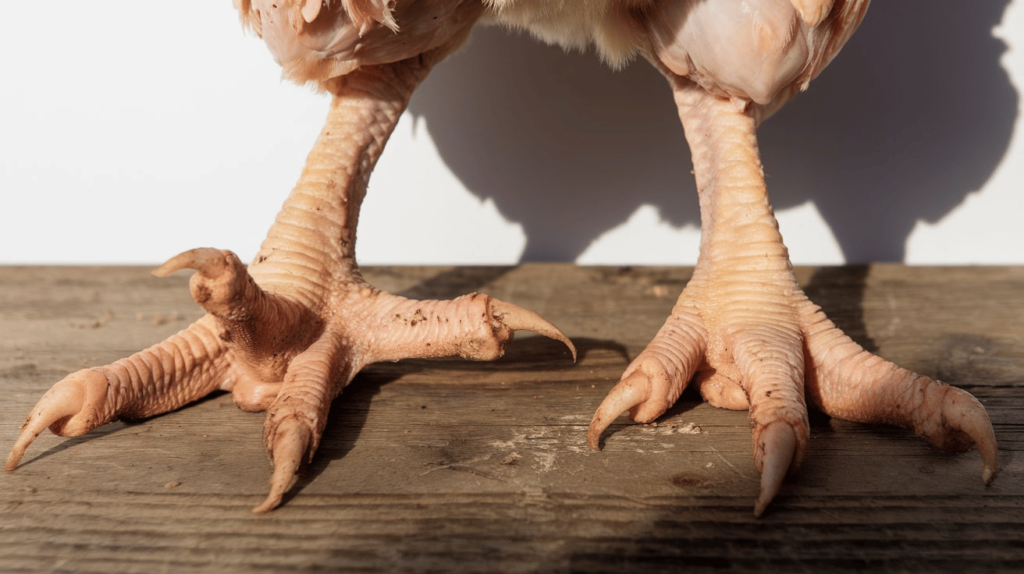
Choking Hazard
Raw chicken feet may also present a choking hazard, particularly for smaller dogs or those that tend to gulp their food without chewing properly. Additionally, while rare, there is a risk that bones, even though relatively soft and chewy when raw, may splinter and cause internal injuries or obstruct the gastrointestinal tract. This is more commonly a concern with cooked bones, but caution is advised for raw ones as well.
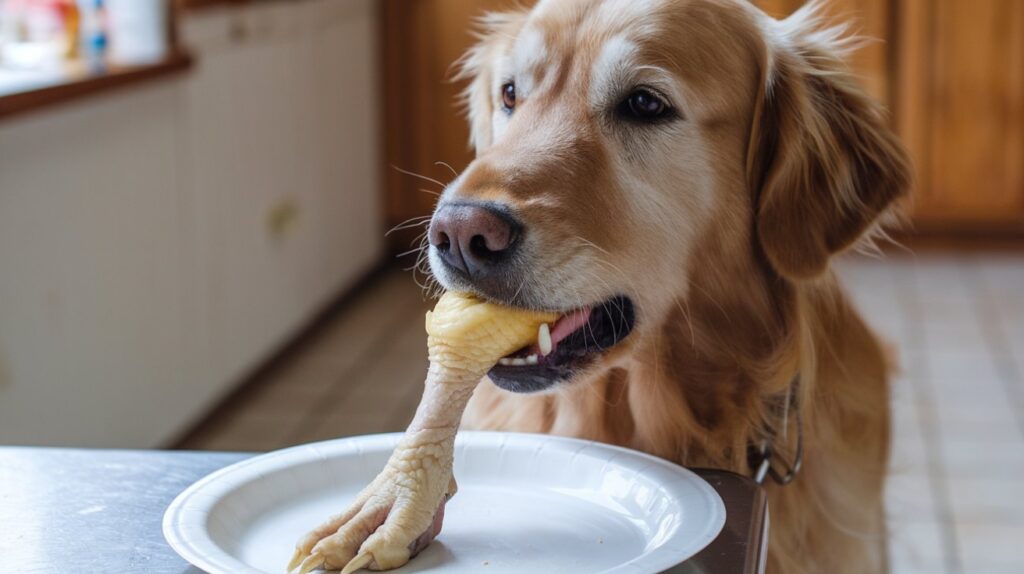
Pet Food Safety
Pet food safety is another critical aspect. Ensuring that the chicken feet are sourced from reputable suppliers who follow strict hygiene practices is essential. This minimizes the risk of bacterial contamination and ensures that the treats are safe for your dog to consume.
Precautions
Here are some precautions you can take when offering raw chicken feet to your dog:
Source Quality:
Always buy chicken feet from trustworthy suppliers known for high safety standards.
Handling Precautions:
Handle raw chicken feet with care. Wash your hands and any surfaces that come into contact with the raw treats.
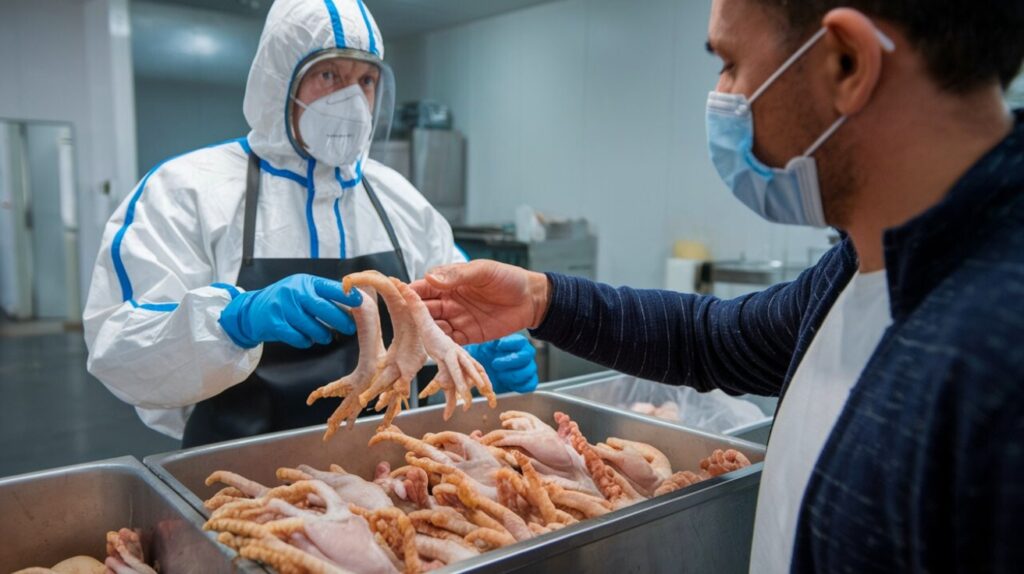
Supervision of Dog:
Always supervise your dog while they eat chicken feet, especially initially, to ensure they chew properly and avoid choking.

Storage:
Proper storage is crucial. Raw or thawed chicken feet should be kept in the refrigerator and used within a couple of days. Dehydrated chicken feet can be stored in a cool, dry place in an airtight container.
Raw vs. Cooked: Which is Safer and More Nutritious?
When deciding whether to feed your dog raw or cooked chicken feet, raw is often the safer and more nutritious choice.
Nutrient Preservation: Raw chicken feet retain more of their natural nutrients, such as glucosamine and chondroitin, which are beneficial for your dog’s joint health. These compounds can be degraded or lost when chicken feet are cooked.
Safety Concerns with Cooked Bones: Cooked chicken feet can become brittle and are more likely to splinter. These splinters can cause internal injuries or blockages in dogs, making them a risky choice. Raw chicken feet, conversely, are softer and less prone to splintering, making them safer for dogs to chew.
Dental Health Benefits: The act of gnawing on raw chicken feet helps to clean teeth and massage gums, reducing the build-up of plaque and tartar.
How to Safely Prepare Chicken Feet for Dogs
Preparing chicken feet safely for your dog is essential to maximize the benefits while minimizing any potential risks associated with raw treats. Whether you choose to feed them raw, dehydrated, or frozen, following proper preparation methods is key to ensuring they are both safe and nutritious.
1. Cleaning:
Begin by thoroughly washing the chicken feet to remove any debris or residual matter. This step is crucial to eliminate any external bacteria that might be present on the surface of the feet.
2. Nail Trimming:
Chicken feet usually come with nails still attached, which can be sharp and potentially hazardous. Trimming the nails before offering the feet to your dog can prevent any accidental injury or ingestion of sharp nail pieces.
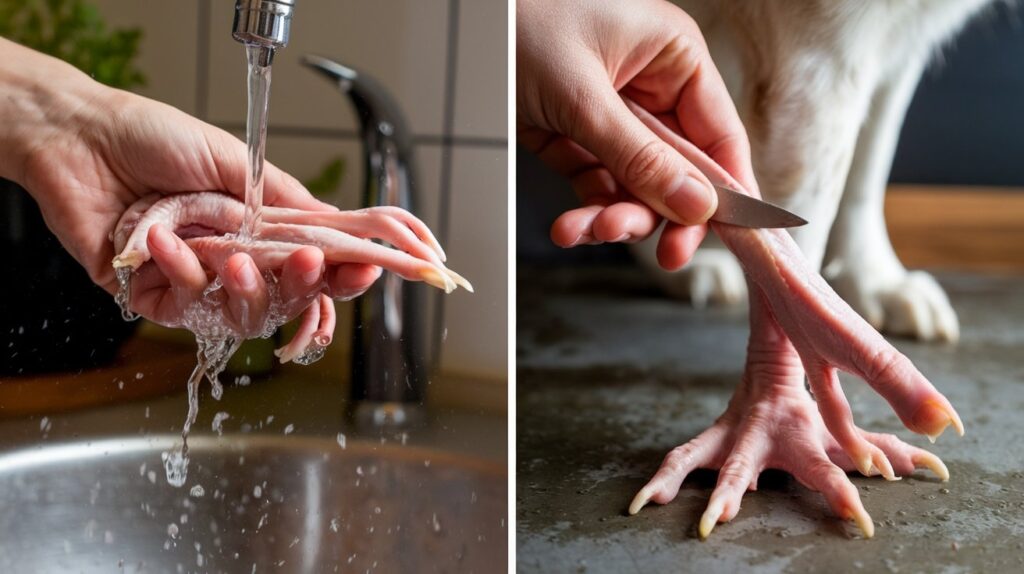
3. Choosing the Preparation Method:
Raw: If feeding raw, ensure that the chicken feet are fresh and handled with care. Store them in the refrigerator or freezer to prevent bacterial growth, and only take them out just before feeding.
Frozen: Freezing chicken feet can help kill some potential pathogens and can also make a refreshing treat for your dog during hot weather. Ensure that they are completely thawed before giving them to your dog to prevent any risk of choking.
Dehydrated: Dehydrating chicken feet is a great way to preserve them and reduce the risk of bacterial growth. Use a dehydrator to slowly remove moisture from the feet at a safe temperature that also preserves the nutrients.
How Much and How Often?
Determining the right amount and frequency of feeding chicken feet to your dog is crucial to balance their overall diet and ensure they reap the benefits without overindulgence. The guidelines largely depend on your dog’s size, breed, age, and dietary needs. Here are some general recommendations:
- Portion Size: Typically, a small to medium-sized dog can safely have one chicken foot per day, while larger breeds may handle up to two. This portioning helps ensure that your dog gets the joint and dental benefits without excessive calorie intake.
- Frequency: Chicken feet should be given as a treat, not as a staple of the diet. Incorporating them a few times weekly as part of a balanced diet is beneficial. It’s important not to replace regular meals with chicken feet, as they do not provide complete nutrition on their own.
| Dog Size | Recommended Amount | Source |
|---|---|---|
| Small to Medium-Sized | 1 chicken foot per day | VetexPlainsPets |
| Large Breeds | Up to 2 chicken feet per day | AnimalWised |
| Dehydrated/Uncooked | Less than 2-3 per day | oodleLife |
- Monitor Your Dog’s Health: Start with a smaller amount and observe how your dog reacts. Some dogs might be more sensitive to new foods, and adjustments might be necessary based on their overall health and digestive response.
Always consult your veterinarian before introducing any new treat to your dog’s diet, especially if your dog has specific health issues or dietary restrictions. This consultation ensures that any new addition, like chicken feet, is appropriate for your pet’s unique health needs and conditions.
Common Questions and Concerns
What are the benefits of feeding raw chicken feet?
Chicken feet are primarily valued for their high content of glucosamine and chondroitin, which are crucial for maintaining healthy joints and promoting cartilage repair. They also help dental health by providing a crunchy treat that helps scrape away plaque as the dog chews them. Rich in protein and low in fat, they make a nutritious, low-calorie treat suitable for dogs.

Can dogs eat raw chicken bones?
Feeding raw chicken bones to dogs is generally considered safe, especially if the bones are part of treats like chicken feet, which are less likely to splinter than cooked bones. Cooked chicken bones are brittle and dangerous as they can easily splinter and cause internal injuries or blockages.
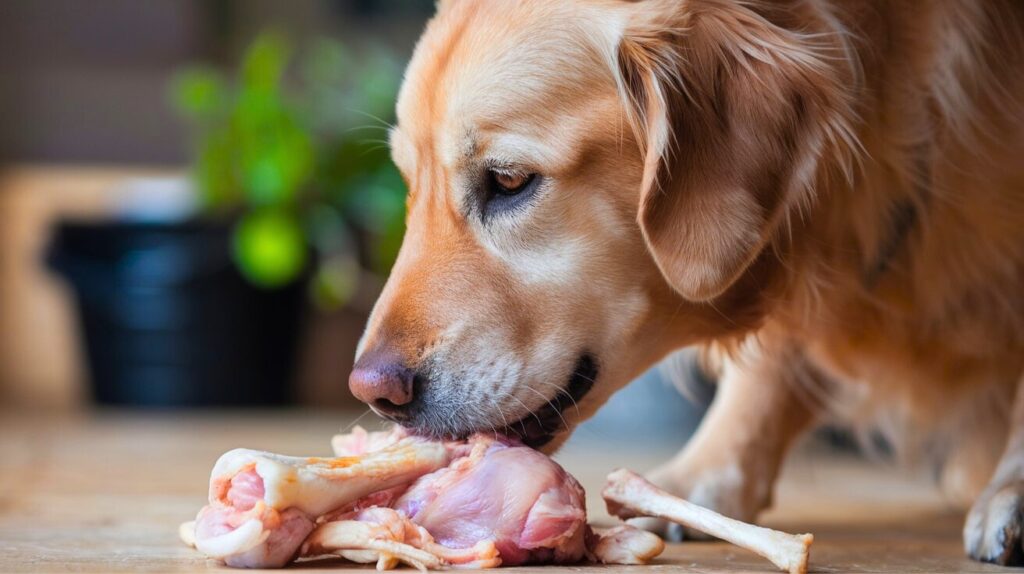
How do I know the chicken feet I’m buying are healthy?
Ensure you purchase chicken feet from reputable sources, preferably suppliers that guarantee products are handled in a sanitary environment. Healthy chicken feet should look clean, have a mild smell, and not be slimy or discolored. It’s also a good idea to opt for organic or free-range chicken feet to avoid potential contaminants from poultry fed with growth hormones or excessive antibiotics.
Can I feed raw chicken feet to my dog?
Yes, you can feed raw chicken feet to your dog. They are a source of natural glucosamine, making them good for your dog’s joint health. However, ensure they are fresh and handled properly to avoid bacterial infections such as Salmonella. It’s always best to consult with your vet first, especially if your dog has a sensitive stomach or dietary restrictions.
How many chicken feet can I feed my dog per day?
The number of chicken feet you can feed your dog daily depends on their size and dietary needs. Generally, one chicken foot per day for smaller dogs and two for larger breeds is sufficient. Remember, chicken feet should only be a part of a well-balanced diet and not the main component, ensuring your dog gets all the necessary nutrients from various sources.
Can dogs eat chicken Feet Raw?
Yes, dogs can eat raw chicken feet. This is often the preferred method for feeding as raw feet are less likely to splinter and are rich in natural nutrients. However, raw chicken feet should be handled with care to prevent the transmission of pathogens, and always ensure they are sourced from a reliable provider to guarantee cleanliness and safety.
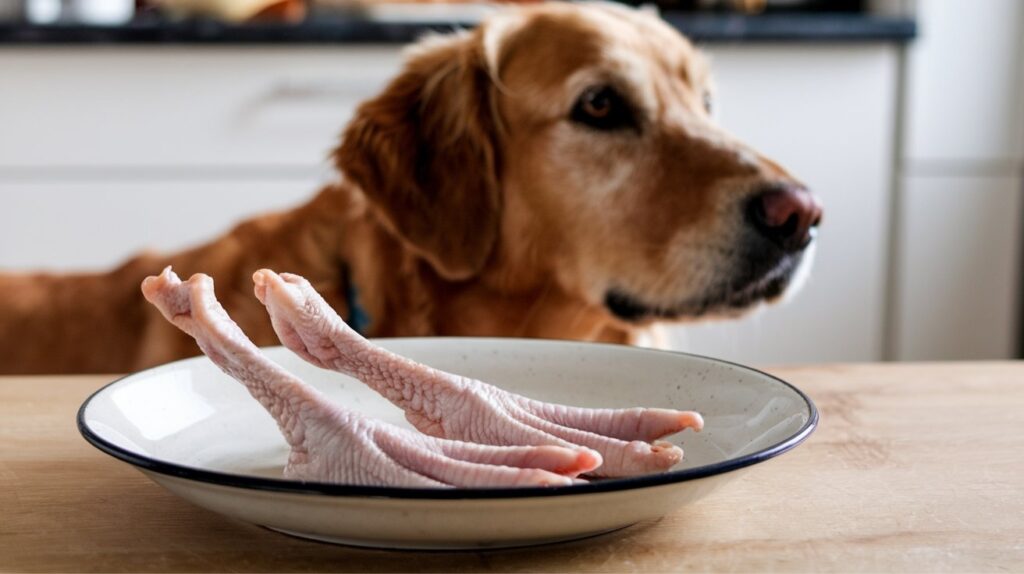
Is it safe for puppies to eat chicken feet?
Yes, Puppies can benefit from the nutrients in chicken feet, such as glucosamine and chondroitin, which are essential for joint health. However, it’s crucial to introduce chicken feet in moderation, starting with small pieces to monitor your puppy’s tolerance and ensure they can chew them safely without any issues.
